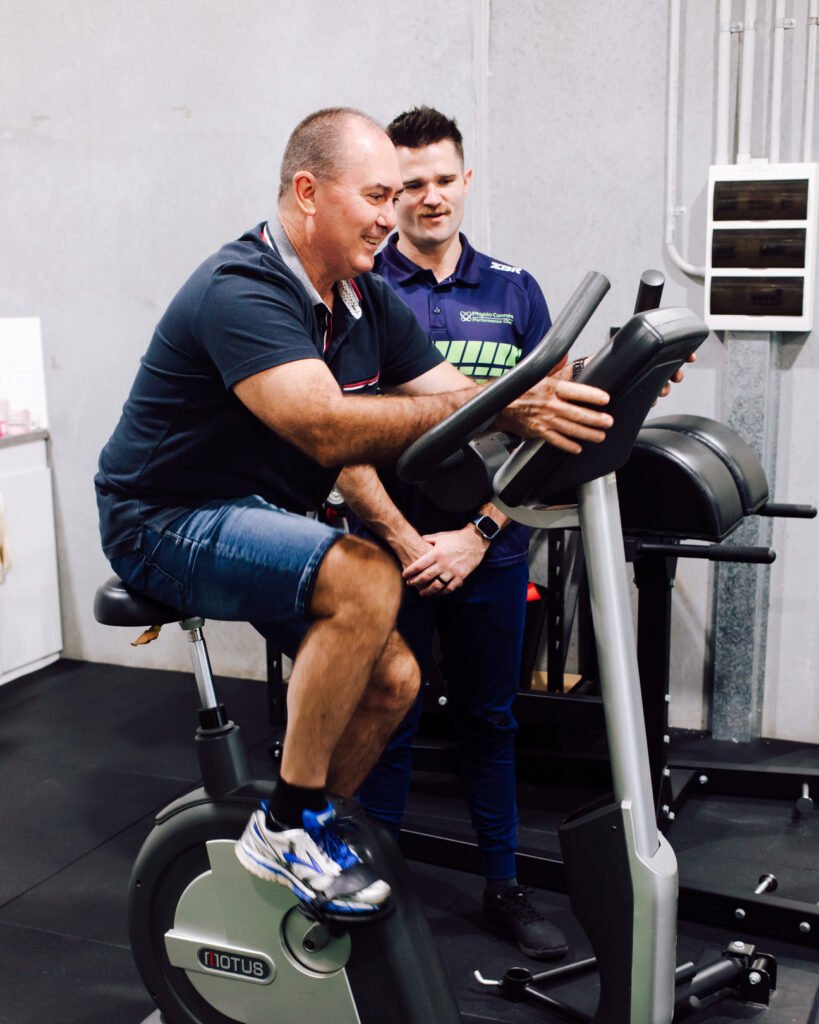Cancer is a term that describes diseases in which some of the body’s cells divide without stopping and invade nearby tissues. In some cases, cancer cells may also spread to additional parts of the body through the lymphatic and blood systems. This uncontrolled cell growth can occur in any cell in the body which explains the numerous types of cancer. Below (in no particular order and not the complete list) are the range of cancers there are:
- Breast
- Head
- Brain
- Prostate
- Haematological
- Testicular
- Colorectal
- Neck
- Pancreatic
- Lung
- Gynaecological
According to the National Health Survey 2022 approximately one in fifty (1.8% or 456,200) people had cancer in 2022. For further context on cancer’s impact; 1 in 2 Australian men and women are being diagnosed with cancer by the age of 85, there’s over 1 million people alive in Australia who are either living with or have had or been previously diagnosed with cancer (Australian Institute of Health and Welfare’s ‘Cancer in Australia 2019’ report).
The evidence is present and growing that exercise can help patients at any point along the cancer continuum. Prior to treatment beginning, during treatment, after treatment completion, palliation and of course prevention.
- Before treatment – “Prehab” to improve baseline function.
- During treatment – Reduce side effects in number, severity and period.
- After treatment completion – Manage recovery, prevent secondary cancers and other chronic conditions.
- Palliation – Maintenance/increase quality of life and function
Exercise, when appropriately prescribed, can be an effective and safe treatment for most cancer patients. Both aerobic and resistance exercise can be beneficial for cancer patients, the goal should be to start small and gradually build up time and intensity from there.
Exercise can provide a positive benefit to cancer treatment and there is a growing body of evidence to support this. See the below table for all the good things exercise can do for those with cancer.
| Maintain or improve on | Reductions |
| Quality of life | Number and severity of treatment related symptoms and side effects (e.g. pain, fatigue) |
| Physical function and fitness | Duration of hospitalisation |
| Body image, mood or self esteem | Anxiety and depression |
| Immune function | Risk of cancer reoccurrence |
| Cognition | Emotional and psychological stress |
| Muscle mass, strength and power | Sexual dysfunction |
Exercise Physiologists play a crucial role in supporting cancer patients. They can provide specialised exercise programs to manage fatigue, rebuild strength and endurance, and improve bone density and balance. Exercise during and post-cancer treatment can help manage weight, increase post-surgical mobility and reduce the side effects of treatment.
Here at Physio Connex our exercise physiologists are university trained professionals who have the skills and knowledge to design safe and effective exercise programs for people living with chronic health conditions such as Cancer. Our accredited exercise physiologists (AEPs) will work with you through evidence-based pre-screening and relevant fitness testing in order to get an understanding of the health conditions you are living with; this will assist them prescribe an individualised exercise program based on your symptoms and needs. They will then provide education and guidance in our onsite functional rehab gym on how to perform these exercises safely and effectively in order to ensure the best possible outcome for you.
AEPs are allied health professionals, recognised by Medicare Australia, the Department of Veterans’ Affairs, and most private health insurers. Our expertise in exercise provides valuable support to individuals living with cancer, mitigating treatment symptoms, and potentially influencing recurrence rates and survival outcomes.
If you want to exercise or know someone who does but aren’t sure how to get started, please book an appointment with one of our AEP’s today. They can help show you how to use exercise in the management of cancer and start enjoying the benefits. Book online now.
Sources:
www.abs.gov.au/statistics/health/health-conditions-and-risks/cancer/latest-release
ESSA – Exercise and Cancer eBook
ESSA position statement on exercise medicine in cancer management – https://www.jsams.org/article/S1440-2440(18)31270-2/fulltext

